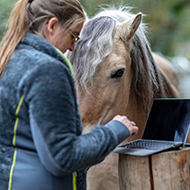How microchipping laws will affect nurses

Mr Cooper also clarified certain aspects of the regulations, which are set to come into force from 6 April, 2015
With compulsory dog microchipping set to become law in England next year, veterinary nurses were given an update on key changes at the BVNA Congress today.
Trevor Cooper, of Cooper & Co Solicitors, reminded delegates that some aspects of the law are already in force. For example, it is now a criminal offence not to report adverse microchipping events, including failed and migrating chips, as well as those that result in health conditions.
All such adverse events must now be reported to the Veterinary Medicines Directorate.
In addition, chips must comply with ISO standards and can only be implanted by somebody who has undergone an approved training course; a vet; or a veterinary nurse under the direction of a vet. Vet and veterinary nurse students may also perform the procedure under a vet's instruction.
Mr Cooper also clarified certain aspects of the regulations, which are set to come into force from 6 April, 2016.
All dog breeders will be required to chip puppies by the age of eight weeks and register themselves as the first keeper. When puppies are transferred to their first home, it will be the legal responsibility of the new keeper to update the details.
Microchips must be registered to the 'habitual keeper' - or, the person with whom the dog normally resides. This has implications for some rescue centres who currently keep the microchips of their dogs registered to their organisation, rather than to the new keeper.
Mr Cooper urged veterinary practices to see the new law as a business opportunity - and to encourage owners to microchip their pets by highlighting the benefits, rather than focusing on the legal implications of failing to comply.
While he said it is unlikely the new law will be stringently enforced, it could offer an opportunity to shut down indiscriminate breeders.
Puppy farmers and 'backstreet breeders' are likely to flout the microchipping law due to cost and wishing to avoid being tracked down. Thus, a puppy buyer who discovers their dog has not been microchipped has an opportunity to report the breeder to the local authorities.
For more information visit www.doglaw.co.uk



 With Strangles Awareness Week just around the corner (5-11 May), vets are being encouraged to share a survey about the disease with their horse-owning clients.
With Strangles Awareness Week just around the corner (5-11 May), vets are being encouraged to share a survey about the disease with their horse-owning clients.